Under construction
What does the ground on or under an antenna do?
1.) Provides something for the antenna to push against. In other words, a ground supplies the "other terminal" for the feedpoint of Marconi-style or single-wire end fed antennas
2.) Provides an alternative path for currents that would normally be induced in lossy soil or objects under the antenna
3.) Provides a low loss return path for displacement currents caused by the antenna's electric field
4.) Provides lightning protection
Lightning and RF Grounds at my Towers
Permanently grounded towers like Rohn 65G.
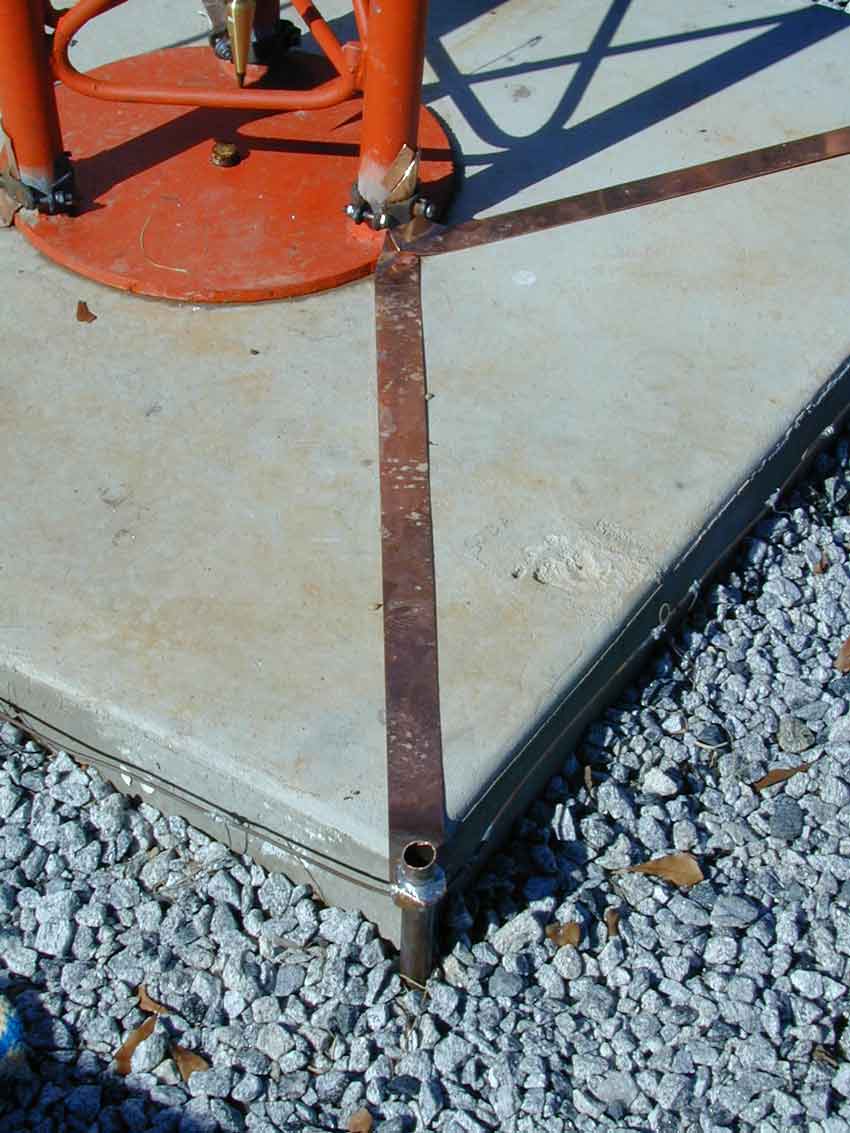
Each leg of the tower base is grounded to the ground system that consists of at least thirty 100-150 foot long #16 buried bare solid-copper wires. These wires are shallow buried.
Additionally, this tower has eight radials, fifty to one hundred foot long, of #6 AWG solid-copper wires. The heavy wires are about 1-foot deep.
I connect copper flashing to my ground rods, which are really 1" copper pipe, by using a step-drill to make a 1" hole. I drive the pipe through the flashing hole, and fill the dimpled area with solder.
Solder is "hard" silver solder, not plumbing type silver solder. It takes a MAP gas torch to melt real silver solder. The copper almost gets red hot when soldering. Silver solder is available from McMaster-Carr or from welding supply houses.
Insulated Towers
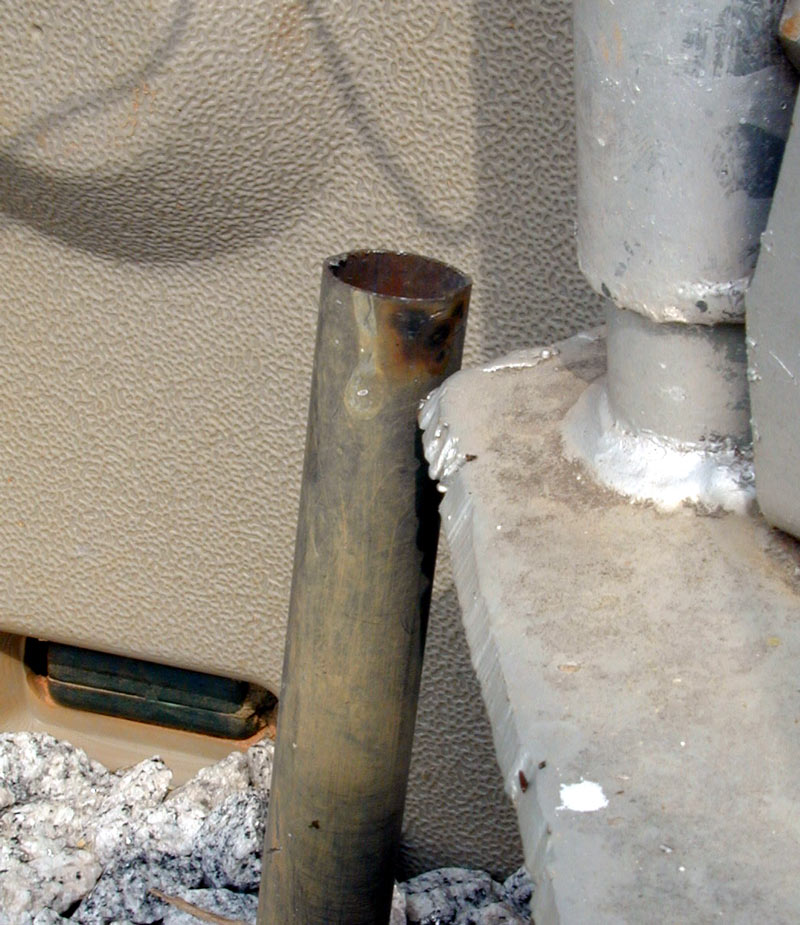
3/4-inch copper pipe at all three corners of the base plate serve as a lightning gap on my insulated base Rohn 45g tower.
This tower has ~100 two-hundred foot long buried radials of #16 bare solid copper wire. The radials serve as RF and primary lightning grounds.
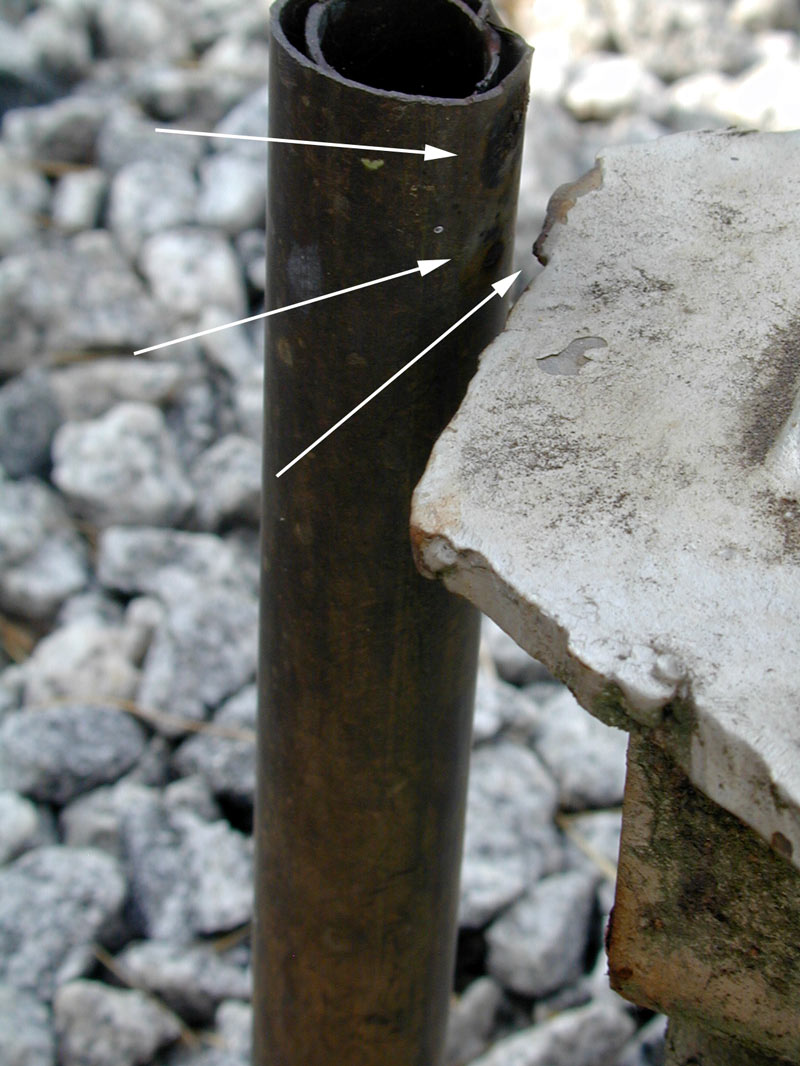
The arrows point to burned marks where lighting has caused arcs across the gap.
I bend the pipe in or out to change the gap.

The AWG 6 gauge radial buss is brazed to the copper pipes.
The ground buss of this tower has one hundred 200-ft long radials attached. The radials are #16 AWG solid tinned copper buss wire.
Ball Gap Lightning Gap
My 300-ft tall Rohn 55G has a ball gap at the base.
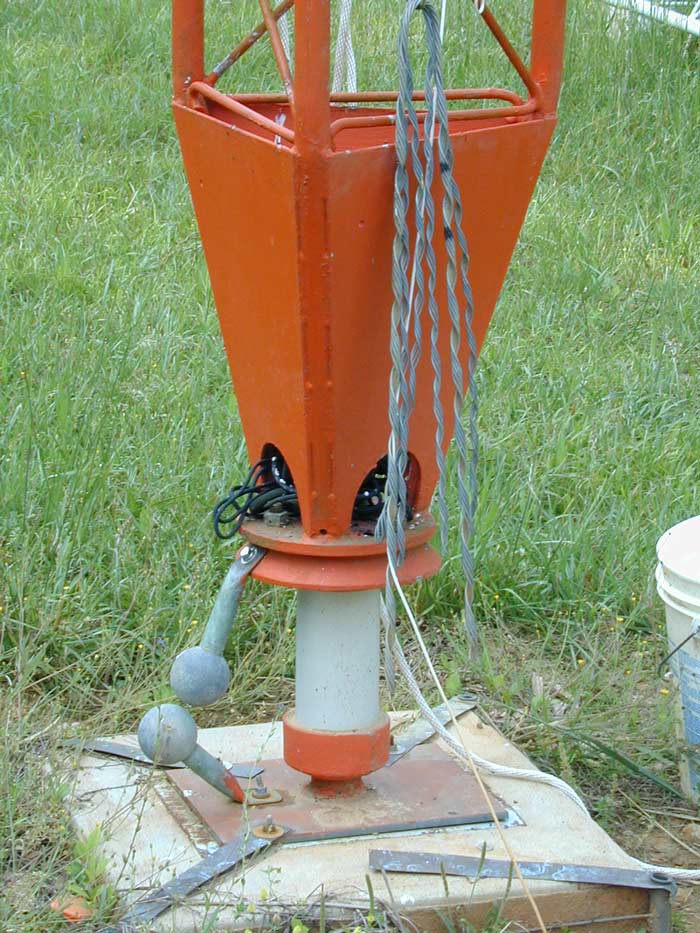
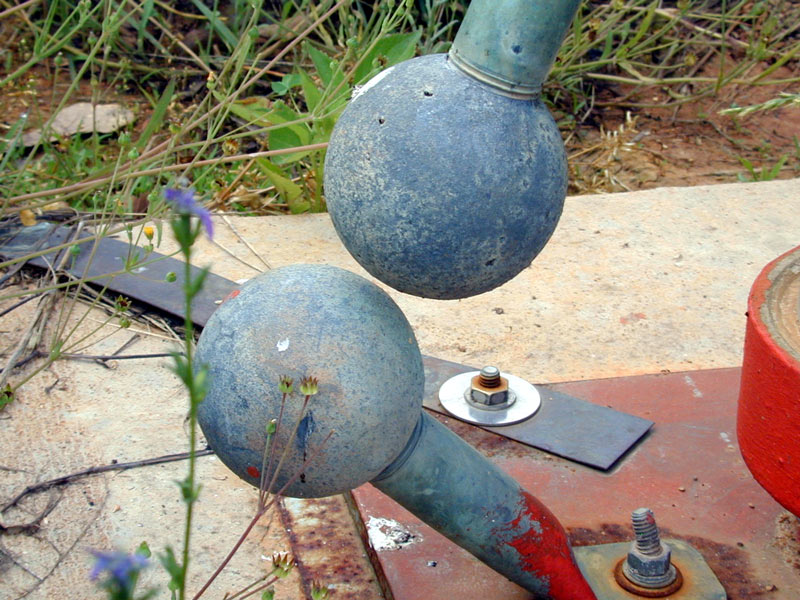
This is the much preferred commercial method.
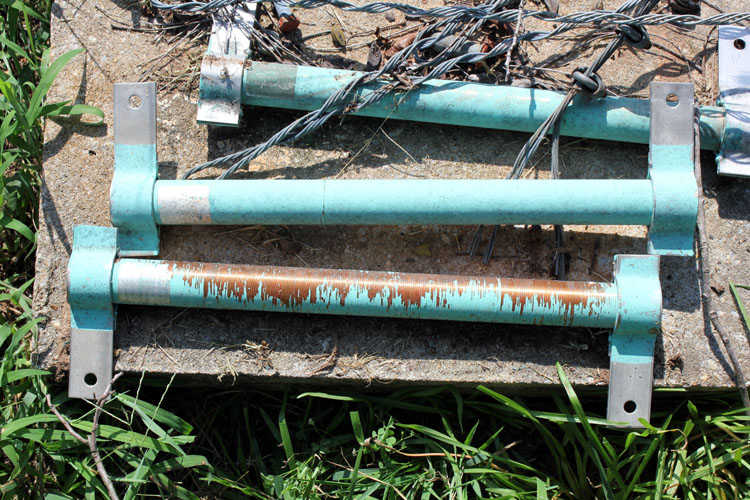
These are very expensive commercial static drain chokes for AM BC towers. They are approximately 18 inches long.
Contrary to myths and false claims, static drain chokes do NOT reduce chances of lightning strikes. They also do not divert significant charge or protect equipment from strike damage, or nearby strike damage.
Static drain chokes accomplish ONLY one thing.
Static drain chokes prevent electric fields from trickle charging a tower that has no resistive or DC path to earth. For example, my insulated 300-foot tower will charge to several thousand volts when brisk breezes flow, especially before storms. Walking up to the tower and touching it, on a day with a brisk breeze, produces quite a "wake-up shock".
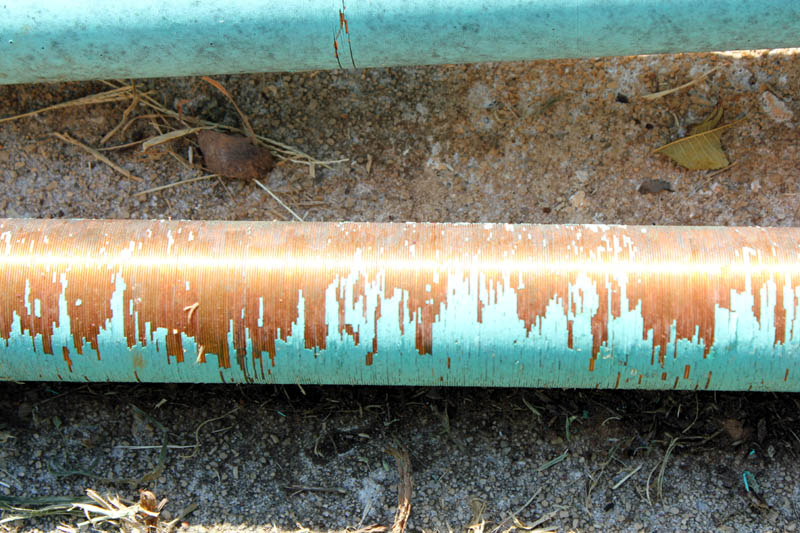
I've measured up to 5 mA of base current while the tower is charging without severe local storms, and nearly 100 mA when clouds are low and weather very threatening, but typically current is far down in microamperes. Even 100k ohms leak resistance will hold the tower base down to a few volts or less, except when lightning flashes. During lightning storms, base chokes have virtually no effect at all on surge currents or surge voltages. They absolutely do NOT reduce damage from distant strikes or closer strikes. They simply act as a trickle drain to prevent a tower without any earth leak-resistance path from climbing.
A tower fed through a series capacitor can charge the series capacitor to several thousand volts. When the capacitor arcs, it can damage things downstream. Static drain chokes prevent this type of damage.